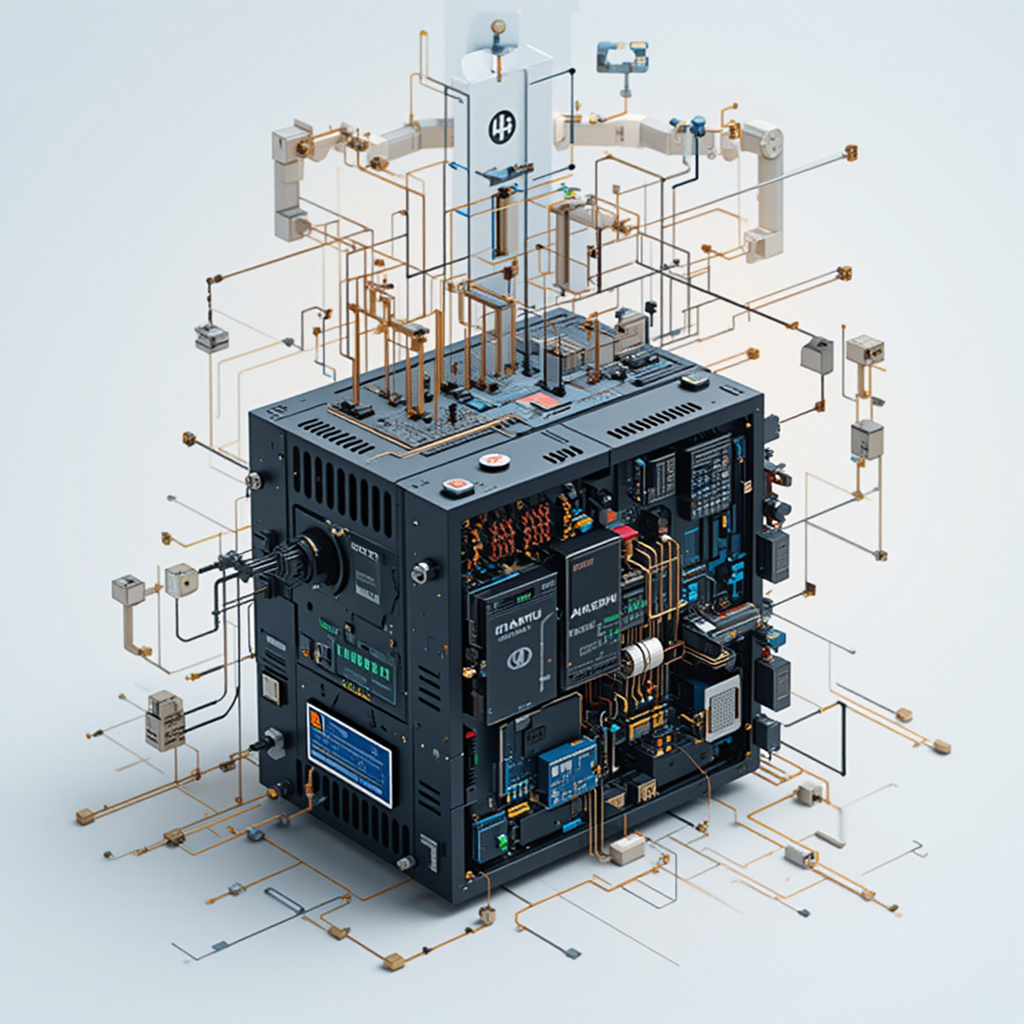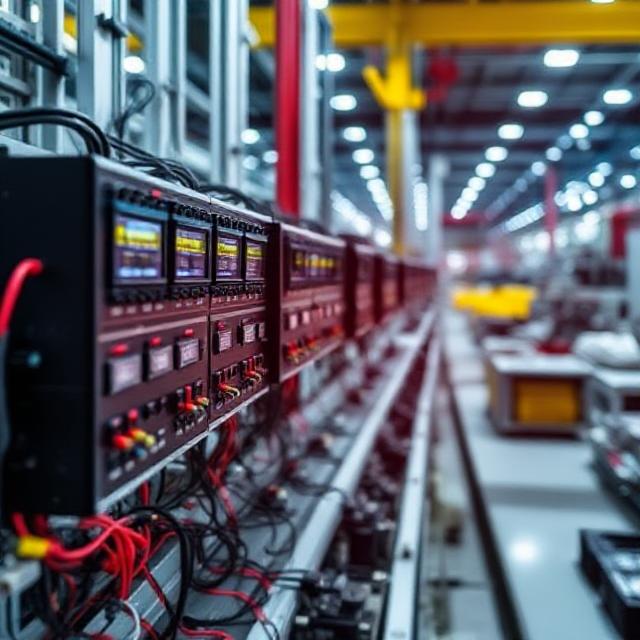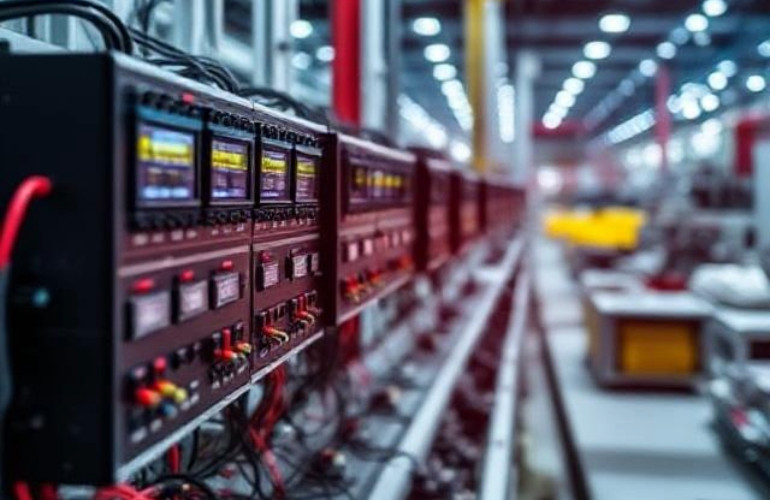In today’s fast-paced manufacturing world, automation is the key to staying competitive. One of the most powerful tools driving automation is the Programmable Logic Controller (PLC). These industrial digital computers are used to control manufacturing processes and machinery, ensuring everything runs smoothly, safely, and efficiently. Whether it is a small factory or an industrial plant, PLCs are crucial in enhancing productivity, minimizing downtime, and maintaining consistent product quality. In this blog, we will discuss the major advantages of applying PLCs in manufacturing and why they are vital for today's industries.
What is a PLC?

A Programmable Logic Controller (PLC) is an industrial control system used to monitor inputs, make decisions based on programmed logic, and control outputs to automate machines or processes. Unlike regular computers, PLCs are designed to operate in harsh environments such as factories, where heat, dust, moisture, and vibration are common. They’re used in everything from assembly lines and packaging machines to robotic arms and conveyor systems.
1. Increased Automation and Efficiency
The primary role of a PLC is to automate processes. Manual control of machines requires operators to be present at all times, which is labor-intensive and prone to human error. With PLCs, operations can be automated, allowing machines to work continuously with minimal human intervention.
How PLCs Boost Efficiency:
- Faster response times compared to human control.
- No breaks or shifts required, enabling 24/7 operation.
- Automated troubleshooting can identify and correct issues faster.
This leads to higher throughput and better use of resources, giving manufacturers a significant edge.
2. Enhanced Product Quality and Consistency
One of the biggest challenges in manufacturing is maintaining consistent product quality. Variations in manual processes can lead to defects or inconsistencies. PLCs eliminate this issue by ensuring that each task is performed exactly the same way, every time.
Benefits for Quality Control:
- Precise timing and measurement for tasks like filling, cutting, or assembling.
- Real-time monitoring of sensors and systems to detect anomalies.
- Consistent process control, reducing the risk of defects.
Manufacturers using PLCs can maintain high standards and build a strong reputation for quality.
3. Reduced Downtime and Maintenance Costs
Downtime can be incredibly expensive. PLCs help minimize unplanned downtime by detecting and addressing problems before they escalate. They can trigger alarms, shut down equipment safely, or send diagnostic data to maintenance teams.
Downtime Reduction Through PLCs:
- Predictive maintenance with real-time sensor feedback.
- Error logging to trace the root cause of failures.
- Faster repair time with diagnostics provided by the PLC system.
With fewer breakdowns and better maintenance planning, companies save money and keep production running.
4. Flexibility and Easy Reprogramming
Unlike hardwired control systems, PLCs can be reprogrammed quickly to adapt to changes in the production process. This is especially useful in today’s environment where product designs and manufacturing methods often change.
Examples of Flexibility:
- Switching production lines from one product to another.
- Adjusting machine timing or sequence without rewiring.
- Scaling up or modifying processes with software changes.
This flexibility allows manufacturers to respond faster to market demands and stay competitive.
5. Improved Safety and Reliability
PLCs are not just about speed and efficiency—they also enhance worker safety and machine reliability. Safety protocols can be built into the control logic to ensure that equipment operates within safe limits.
PLCs and Safety:
- Emergency stop controls and fault detection.
- Interlocks and alarms to prevent unsafe operations.
- Automatic shutdown procedures in dangerous situations.
Because PLCs are built for industrial use, they are highly reliable and resistant to environmental hazards such as vibration, temperature extremes, and electrical noise.
6. Cost Savings Over Time
Although the initial cost of setting up a PLC system can be significant, the long-term cost savings are considerable. Reduced labor, fewer errors, less downtime, and better energy usage all contribute to lower operational costs.
How PLCs Save Money:
- Lower energy consumption through optimized processes.
- Less need for manual oversight.
- Minimal wiring and hardware changes during upgrades.
Over time, the return on investment (ROI) from a PLC system makes it a smart choice for any manufacturer.
7. Data Collection and Monitoring
Modern PLCs often come with built-in communication capabilities and can be integrated into a wider network. This allows manufacturers to monitor and collect real-time data from the shop floor.
Advantages of Data Collection:
- Track machine performance and productivity.
- Analyze trends to improve processes.
- Remote access for troubleshooting or updates.
With more data at their fingertips, decision-makers can make informed improvements to efficiency, quality, and safety.
8. Scalability and Integration with Other Systems
PLCs are designed to be scalable. You can start with a small system and expand it as needed. They also integrate well with Human-Machine Interfaces (HMIs), Supervisory Control and Data Acquisition (SCADA) systems, and Industrial Internet of Things (IIoT) platforms.
Seamless Integration:
- Add more inputs/outputs (I/O) as your system grows.
- Connect to cloud-based platforms for advanced analytics.
- Integrate with robotics, drives, sensors, and other automation tools.
This makes PLCs a future-ready solution for smart manufacturing and Industry 4.0 environments.
9. Easy Troubleshooting and Diagnostics
Another important benefit of PLCs is their built-in diagnostics. Engineers can access fault logs, error messages, and real-time status updates directly from the PLC or an HMI panel.
Why This Matters:
- Quickly identify issues, reducing downtime.
- Preventive alerts before critical failures occur.
- Simplified maintenance through clear fault codes.
This capability leads to faster repairs, less guesswork, and better uptime.
10. Customizability for Any Industry
PLCs are used across many industries—each with its own unique needs. The versatility of PLCs means they can be customized for virtually any type of machine or process.
Industries That Use PLCs:
- Automotive
- Food and beverage
- Pharmaceutical
- Textile
- Electronics
No matter the application, a PLC can be programmed to deliver exactly what the operation requires.
11. Energy Efficiency and Environmental Benefits
Modern PLCs help manufacturers optimize energy use by controlling machines more precisely and turning them off during idle times. This not only saves money but also supports sustainability goals.
Environmental Advantages:
- Reduced energy waste through smarter control.
- Lower carbon footprint with efficient operations.
- Integration with energy monitoring systems.
By making your manufacturing process greener, PLCs can also help your company meet regulatory requirements and environmental certifications.
12. User-Friendly Interfaces and Remote Control
Today’s PLC systems often come with touchscreen HMIs or mobile applications that make them easy to use and monitor. Operators can access system status, make adjustments, or troubleshoot issues even remotely.
Key Benefits:
- Less training needed for operators.
- Real-time visualization of processes.
- Remote support and control, even from mobile devices.
This user-friendly nature of modern PLCs increases their effectiveness and adoption on the factory floor.
PLCs have revolutionized the manufacturing industry by making operations faster, smarter, and more reliable. From boosting efficiency to improving product quality and safety, the benefits are clear. In a world where automation and data are key to success, PLCs are a critical component of any factory's control system.

Manufacturers that invest in PLC technology not only improve their current operations but also prepare for future growth, digital transformation, and competitive advantage in a global market.
Whether you're upgrading your existing systems or starting from scratch, PLCs offer the reliability, flexibility, and intelligence needed to succeed in modern manufacturing. If you're not already using PLCs, now is the perfect time to explore how they can transform your operations.

